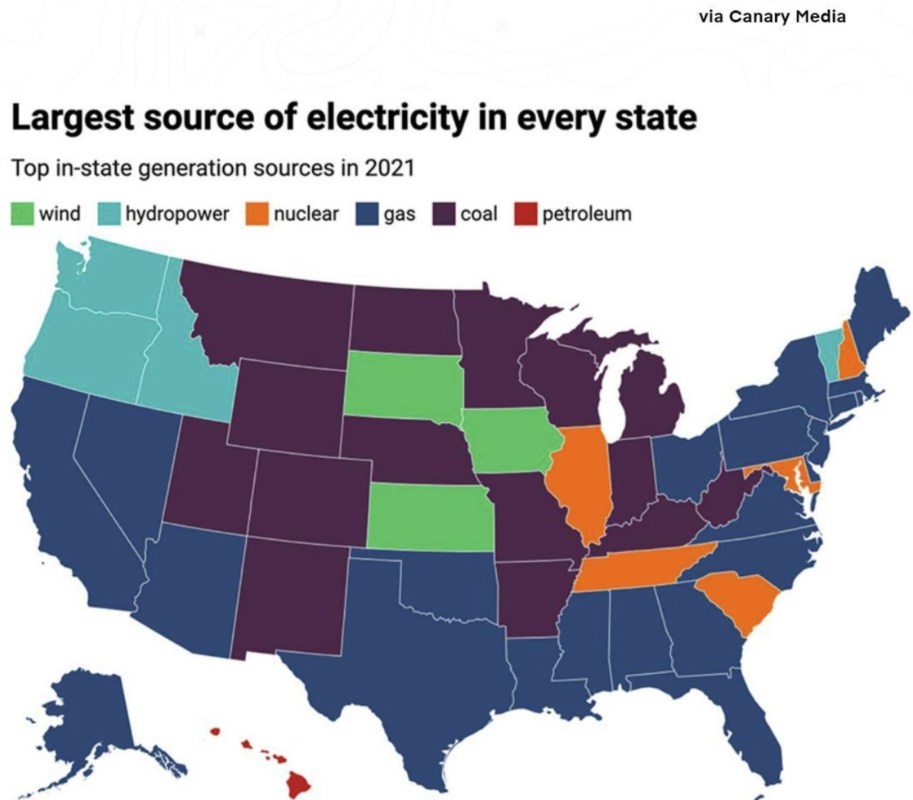Renewable energy sources now generate the largest share of electricity in 12 U.S. states, according to this interactive energy map made by Canary Media.
Nuclear outperformed wind, hydropower, gas, and coal in Illinois, Tennessee, and South Carolina. Hydropower came out on top in states closer to the coast, like Washington, Idaho, and Oregon, as well as Vermont. Wind meanwhile was most popular in Iowa, South Dakota, and Kansas.
Based on data from the U.S. Energy Information Administration (EIA), the energy map demonstrates the progress being made in the transition from dirty energy sources, like gas and coal, to zero-carbon energy sources.
At the moment, about 29% of the world's energy is generated by renewable sources, up from 27% in 2019.
Yet dirty energy sources remain the dominant source of electricity both in the U.S. and abroad. Canary Media's energy map shows that gas powers the bulk of electricity in 20 American states.
Around the world, gas, oil, and coal account for 80% of energy production. They are responsible for 75% of planet-warming gas production and 90% of carbon pollution.
The U.S. is the second-largest producer of carbon pollution in the world after China. In 2021, it contributed 14% of the 40.9 billion tons of global carbon dioxide pollution.
That number is projected to drop as the renewable energy industry gains more ground.
In 2021, President Biden rejoined the Paris Agreement, which commits participating countries to limiting global warming.
The EIA predicts that the use of gas in the U.S. will fall from 38% to 36% in 2023, while coal will drop from 20% to 19%. This transition should speed up, too, following the Inflation Reduction Act that Biden signed into law last year.
The Act has committed $370 billion in investments to promote the implementation of renewable energy, including lowering energy costs for households, tax incentives, and creating jobs in clean energy sectors.
"This legislation is a true game-changer. It will create jobs, lower costs, increase U.S. competitiveness, reduce air pollution," former Vice President Al Gore told the Associated Press. "The momentum that will come out of this legislation cannot be underestimated."
"The world's growing demand for electricity is set to accelerate, adding more than double Japan's current electricity consumption over the next three years," said IEA Executive Director Fatih Birol in a statement. "The good news is that renewables and nuclear power are growing quickly enough to meet almost all this additional appetite, suggesting we are close to a tipping point for power sector emissions."
Join our free newsletter for cool news and actionable info that makes it easy to help yourself while helping the planet.









